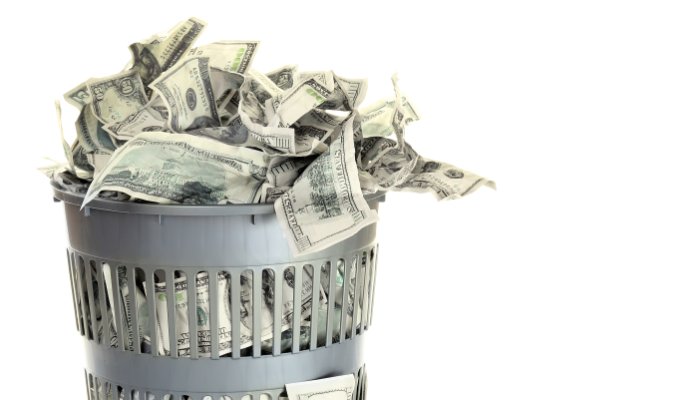Distressed jeans may be fashionable, but it’s much harder to sell a product that appears damaged. That’s because we typically believe that a damaged product isn’t worth as much as one that’s in perfect condition.
Research into the psychology behind recycling supports this idea. According to the research, consumers make subconscious decisions about the value of recyclables before deciding whether to throw them in the recycling bin or toss them in the trash. Items that still seem useful tend to get recycled, while those that appear less useful are more likely destined for the landfill.
I was thinking about this research in the context of our behavioral journey mapping, where we identify customer touchpoints and assess customers’ emotional reactions at each one. In our work with clients, we have found that customers make value judgments similar to those identified by the recycling researchers. It’s important to be aware of these issues if you want to create a positive customer experience.
Recycling Choices
Researchers Remi Trudel and Jennifer Argo conducted a series of studies to identify the unconscious biases that influence people’s choices about recycling. In the first study, they found that participants were more likely to recycle whole sheets of paper, while small bits of paper were more likely to end up in the trash. In follow-up studies, they found that the smaller the paper, the more it seemed like trash.
The researchers then conducted tests to see if the perceived usefulness of an item had any influence on recycling decisions. They found that participants were more likely to recycle pieces of paper if they had identified uses for them. They also found participants more likely to recycle empty soft drink cans if they were still in pristine condition. These cans were seen as useful. Dented cans were viewed as less useful and were more likely to be thrown in the trash.
The researchers concluded that when items are small or have had their forms distorted, people think they’re less useful. And when an item isn’t useful, it’s more likely be be perceived as garbage and thrown away.
What Customers Think About Altered or Damaged Products
It seems to me that the recycling research offers some important insights when we consider a customer’s journey.
For example, I used to shop at a local hardware store. One day, my wife asked me to pick up a meat thermometer while I was there, and I stumbled upon a kitchen section that looked like it hadn’t been touched since 1972. Boxes were yellowed, dusty and dented. I found a meat thermometer, but the package had been opened. Would the thermometer work? I wasn’t willing to take the chance. I drove a couple of miles to a newer hardware store and made my purchase. And I’ve been shopping there ever since.
No doubt, we’ve all had similar experiences. Have you declined to buy something as a gift because the box was damaged? Bypassed a seat on the train because the upholstery was stained or torn? Rummaged through grocery shelves to find a can of soup that wasn’t dented?
These are all unconscious emotional decisions that we make about usefulness and value and that we pick up as Customer Experience consultants. Somehow, we believe that a product is less useful and less valuable if the product or packaging has been altered. That might mean it’s been damaged, or the alternation might be a misguided marketing attempt. Remember Heinz’s short-lived experiments with green and purple ketchup?
The beliefs we form about a product’s usefulness can translate to our overall experience or feeling about a brand, retailer or service provider. That’s what happened with me and my local hardware store. Their inattentiveness to customers’ emotional impressions cost them my business. (Apparently I’m not the only one, since the store isn’t there anymore.)
Retailers and service providers need to be aware of these emotional reactions if they’re going to design an effective customer experience. Minimizing perceptions of damage or alteration is one way to maximize customers’ feelings about a product’s usefulness and value. That may mean routinely collecting damaged items and putting them in a discount bin, being more aggressive about maintenance, or rethinking unusual product designs and packaging.
When was the last time you refused to buy something because it just didn’t look right? Did the experience affect your feelings about the product or brand?
Find out more on how you can improve your Customer Experience and ultimately your sales in our latest ebook Unlocking The Hidden Customer Experience.
LinkedIn followers use promo code Hidden50 to get your 50% discount.
If you enjoyed this post you will find the following articles interesting:
Yoga Pants Can Realign Customer Experience


